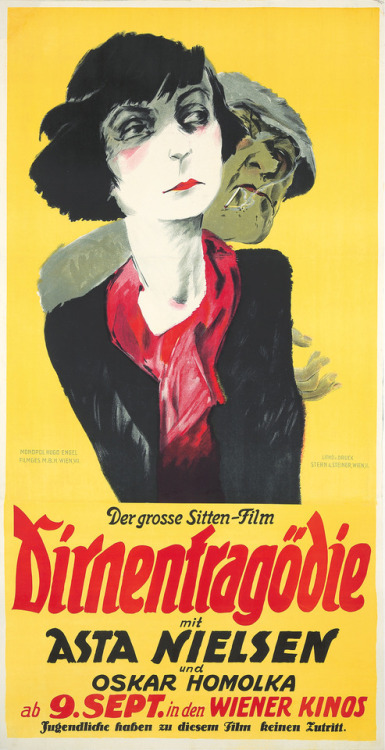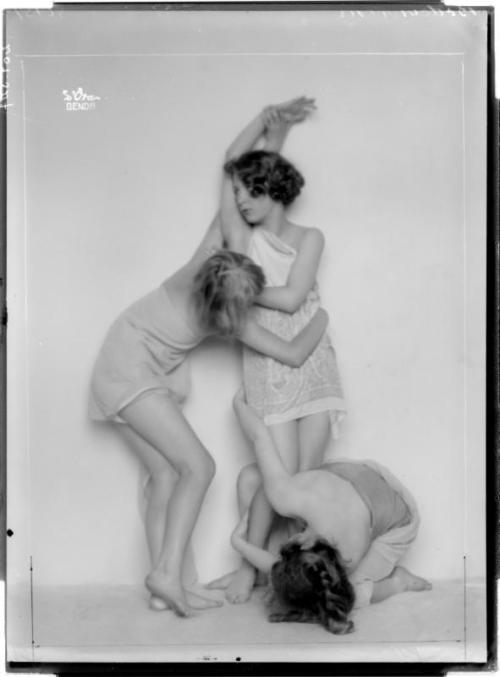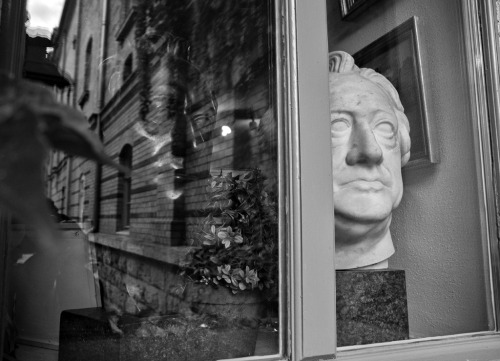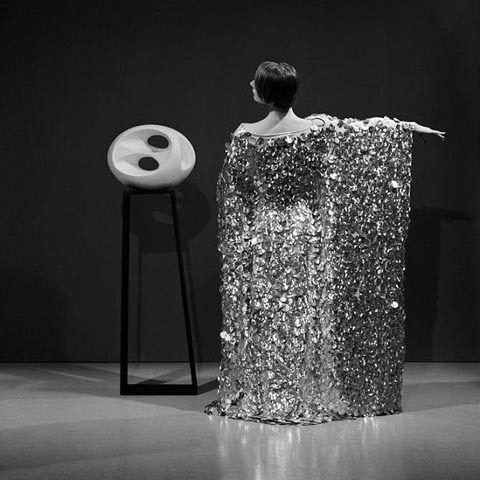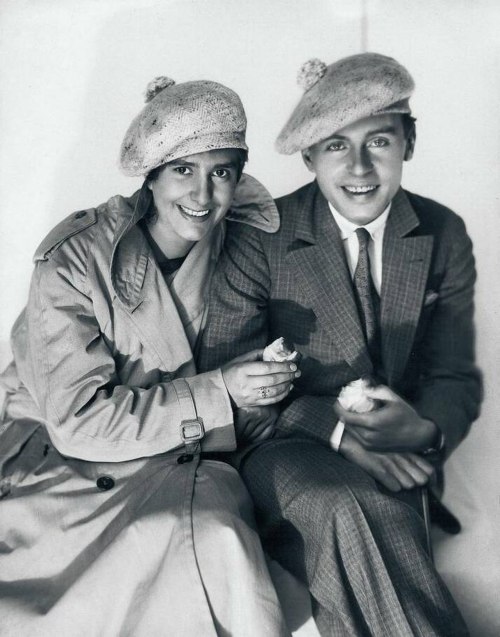#weimar
Dirnentragodie (“Tragedy of the Street”). 1927. Josef Fenneker.
36 ½ x 72 1/8 in./92.7 x 183.2 cm
You can already see, in this riveting two-sheet poster, why the Danish actress Asta Nielsen was the first international star of silent film: the large dark eyes, a haunted face, her boyish figure. She often portrayed headstrong, passionate women trapped by tragic circumstances: transforming this melodramatic trope with naturalism and overt eroticism – leading her films to be heavily censored in the U.S. “Dirnentragodie,” or ‘Tragedy of the Street,’ was Nielsen’s final silent role. The film epitomizes the Weimar movement called The New Objectivity, which tried to create a middle ground between Brechtian alienation and Expressionist emotionalism by forcing middle-class characters into the oppressive social circumstances of the street. “Dirnentragodie” features Nielsen as an aging prostitute who takes in a young man running away from his middle-class family. She fantasizes about a different future; the man returns to his family; she’s accused of murdering her pimp. This 1927 Fenneker design was used for the release of the film in Vienna.
Post link
George Grosz (German, 1893 - 1959)
Illustrious Society, 1927
watercolor and India ink on paper
Post link

